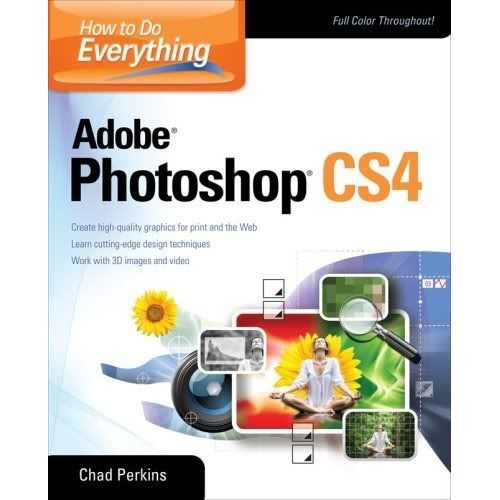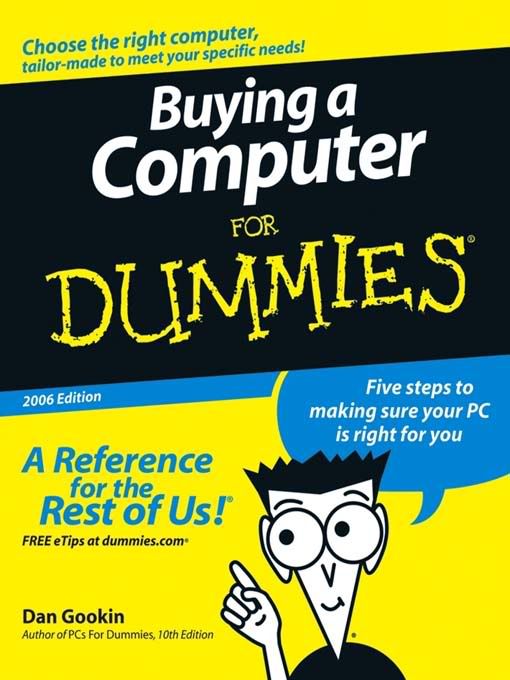Complete Do It Yourself | Size : 27 MB | RS
o – 30 Quick Fixes For Everyday Disasters.pdf (773.48 kilobyte)
o – 4×8 Utility Trailer-Drawings.pdf (836.53 kilobyte)
o – 4×8 Utility Trailer-Instructions.pdf (337.47 kilobyte)
o – A Guide To Building Outdoor Stairs.pdf (233.24 kilobyte)
o – About Bathrooms.pdf (61.1 kilobyte)
o – About Kitchens.pdf (76.68 kilobyte)
o – About Pvc Windows.pdf (121.95 kilobyte)
o – Actions To Prevent Flooding Around The House.pdf (49.42 kilobyte)
o – Add A Radiator.pdf (159.09 kilobyte)
o – Add A Wall Light.pdf (90.93 kilobyte)
o – Adding A Socket.pdf (176.96 kilobyte)
o – Air Bricks.pdf (180.75 kilobyte)
o – All About Decking.pdf (132.39 kilobyte)
o – Artex And Plaster.pdf (175.14 kilobyte)
o – Backyard Pond.pdf (211.92 kilobyte)
o – Basic Plumbing.pdf (210.87 kilobyte)
o – Bonus Utility Trailer Plan !.pdf (197.11 kilobyte)
o – Boxing In Pipes.pdf (118.74 kilobyte)
o – Brick Bonds.pdf (208.04 kilobyte)
o – Bricklayers Tool Kit.pdf (106.74 kilobyte)
o – Brickwork.pdf (171.66 kilobyte)
o – Build A Brick Barbecue.pdf (121.27 kilobyte)
o – Build A Carport.pdf (190.99 kilobyte)
o – Build A Shed.pdf (189.61 kilobyte)
o – Build A Shower Cubicle.pdf (168.25 kilobyte)
o – Building A Basic Cupboard.pdf (491.27 kilobyte)
o – Building A Dry Stone Wall.pdf (96.59 kilobyte)
o – Building Regulations Electrical Safety Jan 2005.pdf (901.27 kilobyte)
o – Building Traditional Casing For New Windows.pdf (711.39 kilobyte)
o – Built In Storage Space.pdf (350.08 kilobyte)
o – Cement & Mixes.pdf (60.39 kilobyte)
o – Ceramic Tiles For Worktops.pdf (161.39 kilobyte)
o – Change A Door Handle.pdf (41.69 kilobyte)
o – Changing Taps.pdf (168.57 kilobyte)
o – Cladding.pdf (293.68 kilobyte)
o – Closing And Opening An Existing Fireplace.pdf (219.67 kilobyte)
o – Colour Combinations.pdf (123.13 kilobyte)
o – Colour Schemes.pdf (182.36 kilobyte)
o – Consumer Unit.pdf (199.11 kilobyte)
o – Cornices And Coving.pdf (74.66 kilobyte)
o – Corrugated Sheet Roofing.pdf (73.67 kilobyte)
o – Create A Town Garden And Patio.pdf (215.42 kilobyte)
o – Curing An Air Lock In A Hot Water Pipe.pdf (141.68 kilobyte)
o – Deck Marking.pdf (88.61 kilobyte)
o – Deck Post Holes.pdf (86.7 kilobyte)
o – Deck Structural Design.pdf (101.7 kilobyte)
o – Decking Steps.pdf (99.79 kilobyte)
o – Design,plan & Fit A Kitchen.pdf (177.6 kilobyte)
o – Designing Your Garden.pdf (162.1 kilobyte)
o – Different Types Of Hammers.pdf (54.27 kilobyte)
o – Diy Q&A.pdf (132.82 kilobyte)
o – Dormer Building.pdf (592.15 kilobyte)
o – Dry Rot & Wet Rot.pdf (24.04 kilobyte)
o – Earth Bonding.pdf (53.03 kilobyte)
o – Electrical Safety.pdf (142.13 kilobyte)
o – Fireplace.pdf (360.28 kilobyte)
o – Fit A Bath And Wash Basin.pdf (155.99 kilobyte)
o – Fit Extra Electrical Sockets.pdf (218.36 kilobyte)
o – Fit a Toilet and Bidet.pdf (152.34 kilobyte)
o – Fitting A Mortice Latch.pdf (262.17 kilobyte)
o – Fixing To Lathe & Plaster.pdf (54.67 kilobyte)
o – Fixing To Plasterboard And Plasterboard Fixings.pdf (68.86 kilobyte)
o – Foundations For Light Garden Walls.pdf (93.16 kilobyte)
o – Garage Floor Insulation.pdf (149.84 kilobyte)
o – General Do It Yourself Safety Comments.pdf (40.94 kilobyte)
o – Gun Applied Sealants And Adhesives.pdf (36.86 kilobyte)
o – Handrail Anatomy.pdf (47.62 kilobyte)
o – Hanging A Door.pdf (236.8 kilobyte)
o – Hanging Wallpaper.pdf (161.57 kilobyte)
o – Heat Guns.pdf (57.43 kilobyte)
o – Home Security.pdf (183.13 kilobyte)
o – How A Lighting Circuit Works.pdf (124.99 kilobyte)
o – How To Avoid The Cowboy Builder.pdf (34.72 kilobyte)
o – How To Build A Deck.pdf (375.74 kilobyte)
o – How To Build A Raised Formal Pool.pdf (53.22 kilobyte)
o – How To Build A Retaining Wall.pdf (59.74 kilobyte)
o – How To Construct A Suimple Garden Pond.pdf (100.17 kilobyte)
o – How To Hang Wallpaper.pdf (59.65 kilobyte)
o – How To Install Pvc Downpipes.pdf (41.07 kilobyte)
o – How To Repair Faucets(Taps).pdf (160.78 kilobyte)
o – How To Wire A Plug.pdf (1.76 megabyte)
o – In-Ground Pool.pdf (645.84 kilobyte)
o – Indoor Lighting.pdf (167.35 kilobyte)
o – Install A Fireplace.pdf (208.16 kilobyte)
o – Install An Electric Shower.pdf (152.58 kilobyte)
o – Install Guttering.pdf (201.2 kilobyte)
o – Installing A Peephole.pdf (35.03 kilobyte)
o – Installing A Pre-Hung Door.pdf (50.42 kilobyte)
o – Installing Deck Boards.pdf (68.89 kilobyte)
o – Installing Deck Joists.pdf (79.79 kilobyte)
o – Installing Deck Posts.pdf (216.82 kilobyte)
o – Installing Deck Stairs.pdf (79.98 kilobyte)
o – Installing The Deck Ledger.pdf (69.63 kilobyte)
o – Installing The Deck Railing.pdf (83.29 kilobyte)
o – Interior Painting.pdf (192.39 kilobyte)
o – Ladders.pdf (61.68 kilobyte)
o – Laminate Flooring.pdf (37.96 kilobyte)
o – Lay A Laminate Floor.pdf (213.23 kilobyte)
o – Lay A Pebble Path.pdf (41.45 kilobyte)
o – Lay Carpet Tiles.pdf (185.09 kilobyte)
o – Lay Paving Stones.pdf (53.56 kilobyte)
o – Laying A Brick Walkway Or Patio.pdf (116.32 kilobyte)
o – Laying A Deck Straight.pdf (34.37 kilobyte)
o – Laying Stepping Stones.pdf (69.84 kilobyte)
o – Lining Paper.pdf (93.44 kilobyte)
o – Man-Made Board.pdf (168.41 kilobyte)
o – Matching Sand And Cement Mixes.pdf (23.46 kilobyte)
o – Measuring And Marking.pdf (171.02 kilobyte)
o – Metric And Imperial Conversions.pdf (64.66 kilobyte)
o – Nails.pdf (101.7 kilobyte)
o – Outdoor Lighting.pdf (177.31 kilobyte)
o – Paint Effects.pdf (176.42 kilobyte)
o – Painting A Ceiling.pdf (58.6 kilobyte)
o – Painting A Door.pdf (59.37 kilobyte)
o – Painting Ceramic Tiles.pdf (49.76 kilobyte)
o – Painting Interior Panel Doors.pdf (49.43 kilobyte)
o – Painting Interior Walls.pdf (112.34 kilobyte)
o – Painting Problems.pdf (190.87 kilobyte)
o – Painting Tips & Secrets.pdf (141.46 kilobyte)
o – Pests Around The House.pdf (51.84 kilobyte)
o – Planning A Deck.pdf (101.19 kilobyte)
o – Planning A New Internal Partition.pdf (61.15 kilobyte)
o – Planning Permission And Building Regulations.pdf (71.18 kilobyte)
o – Plumbing Care And Repair.pdf (193.92 kilobyte)
o – Pointing Brickwork.pdf (503.61 kilobyte)
o – Producing Drawings For Planning Permission.pdf (66.23 kilobyte)
o – Pvc And Polycarbonate Roofing.pdf (58.31 kilobyte)
o – Radial Circuit.pdf (39.16 kilobyte)
o – Remove A Radiator.pdf (51.67 kilobyte)
o – Removing Or Plastering Over Artex.pdf (82.45 kilobyte)
o – Renovating Wood.pdf (178.73 kilobyte)
o – Repairing A Dripping Tap.pdf (296.73 kilobyte)
o – Replace Broken Tiles.pdf (52.73 kilobyte)
o – Replacing A Brick.pdf (93.59 kilobyte)
o – Safe Diy.pdf (184.59 kilobyte)
o – Sandpapers No2.pdf (46.22 kilobyte)
o – Shelving And Storage.pdf (181.1 kilobyte)
o – Size Conversion Charts.pdf (79.07 kilobyte)
o – Spanners And Wrenches.pdf (125.22 kilobyte)
o – Sticky Door.pdf (63.37 kilobyte)
o – Sunshine Ceiling(1).pdf (317.49 kilobyte)
o – Sunshine Ceiling(2).pdf (186.81 kilobyte)
o – Three Layer Felt Roofing.pdf (387.29 kilobyte)
o – Timber Care.pdf (53.13 kilobyte)
o – Timber Cutting Hand Saws.pdf (142.31 kilobyte)
o – Timber Decking.pdf (308.04 kilobyte)
o – Tow Dolly Plans.pdf (202.26 kilobyte)
o – Towing Dolly Instructions.pdf (191.81 kilobyte)
o – Upvc Fascia.pdf (78.32 kilobyte)
o – Wainscotting.pdf (13.61 kilobyte)
o – Wall Fixings For Hollow & Solid Surfaces.pdf (67.18 kilobyte)
o – Wall Tiling.pdf (179.48 kilobyte)
o – Wallpaper A Ceiling.pdf (82.9 kilobyte)
o – Wallpaper Stripping.pdf (59.98 kilobyte)
o – Wallpapering Techniques.pdf (188.06 kilobyte)
o – Waterproof Your Roof.pdf (173.34 kilobyte)
o – Wiring A Junction Box.pdf (88.2 kilobyte)
o – Wiring A Ring Main.pdf (106.25 kilobyte)
o – Wooden Interior Doors.pdf (60.71 kilobyte)
Download Link:





















